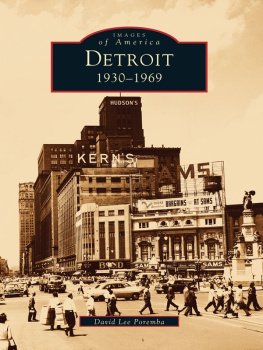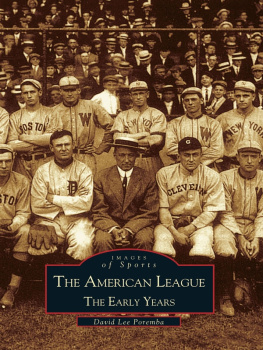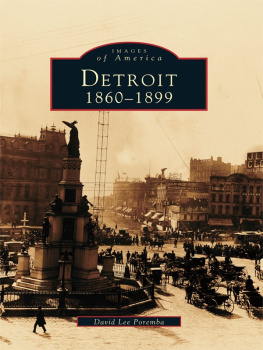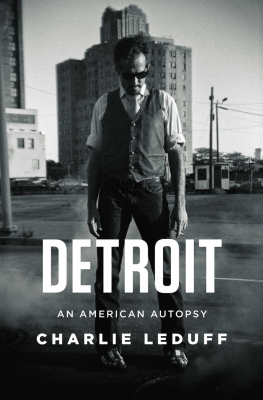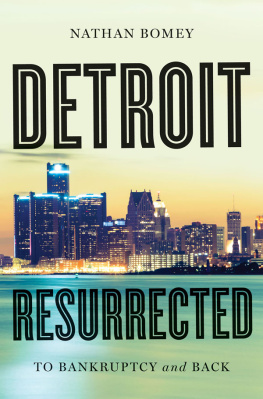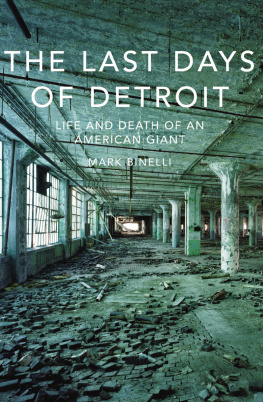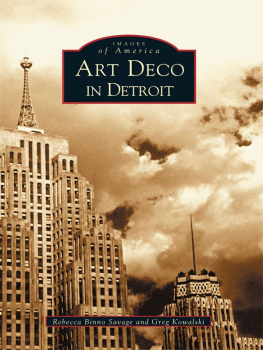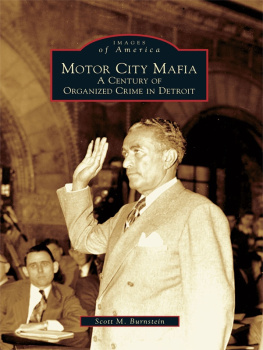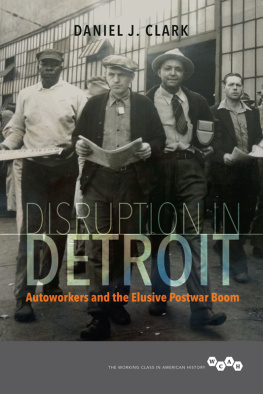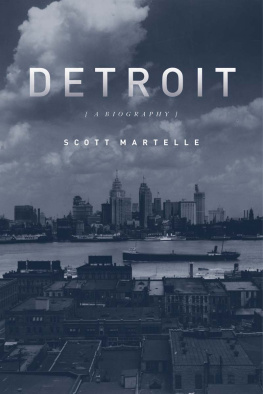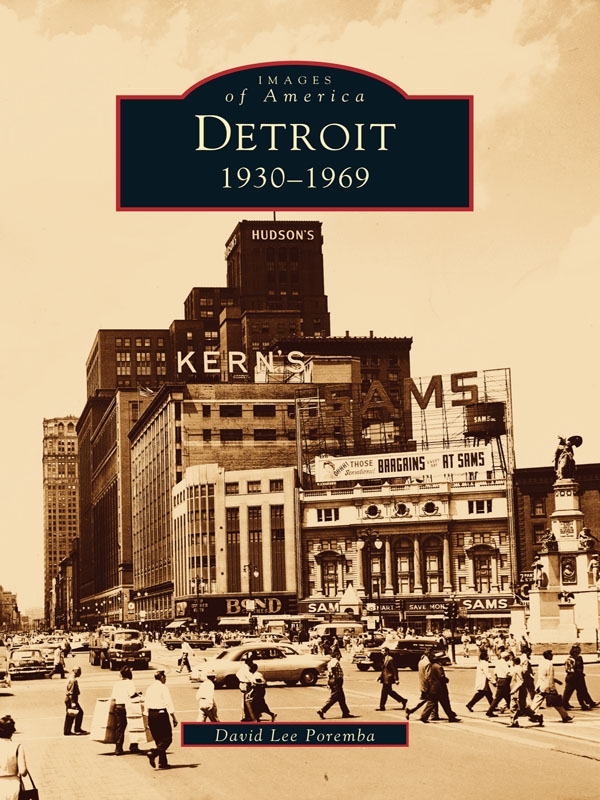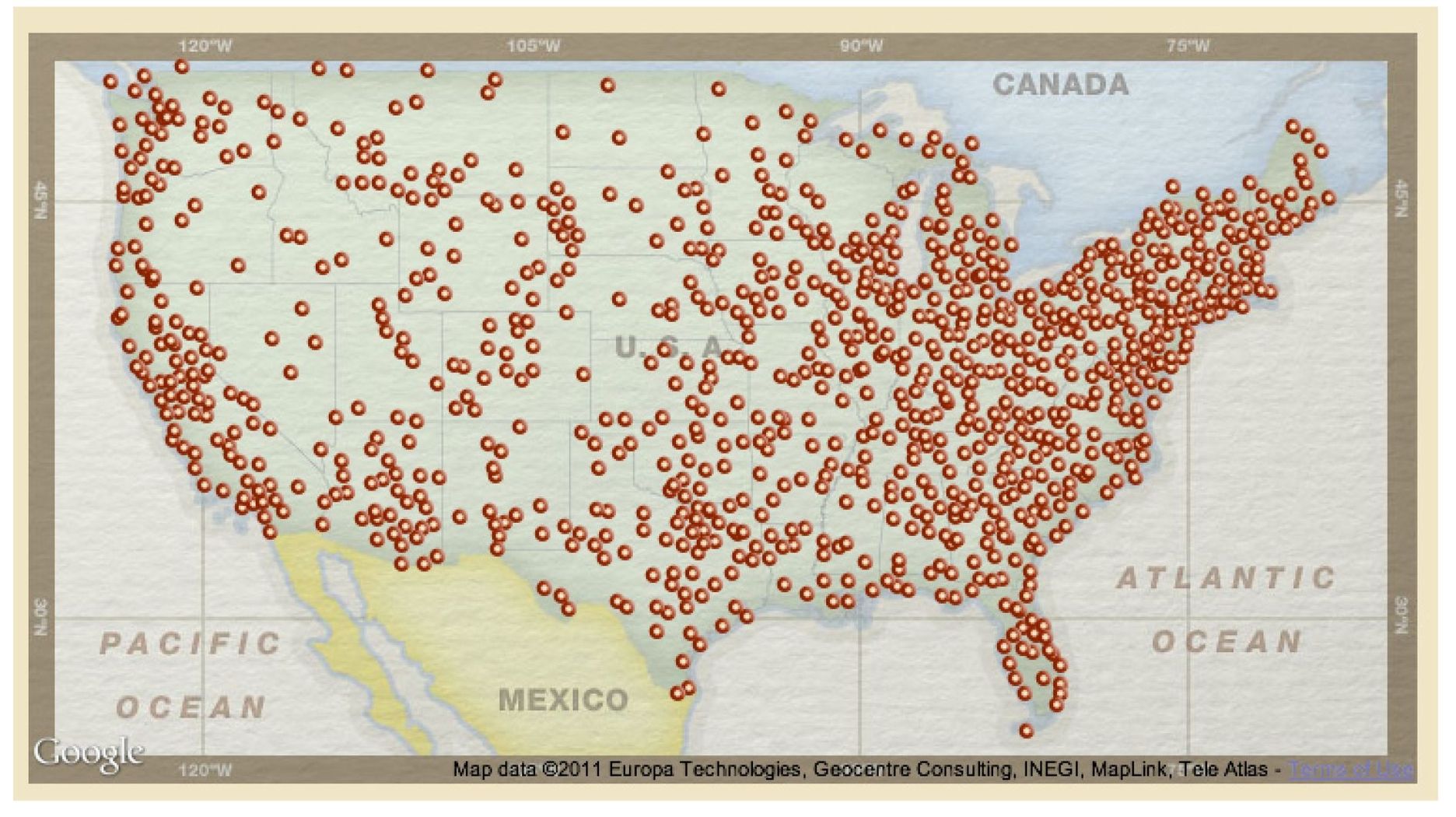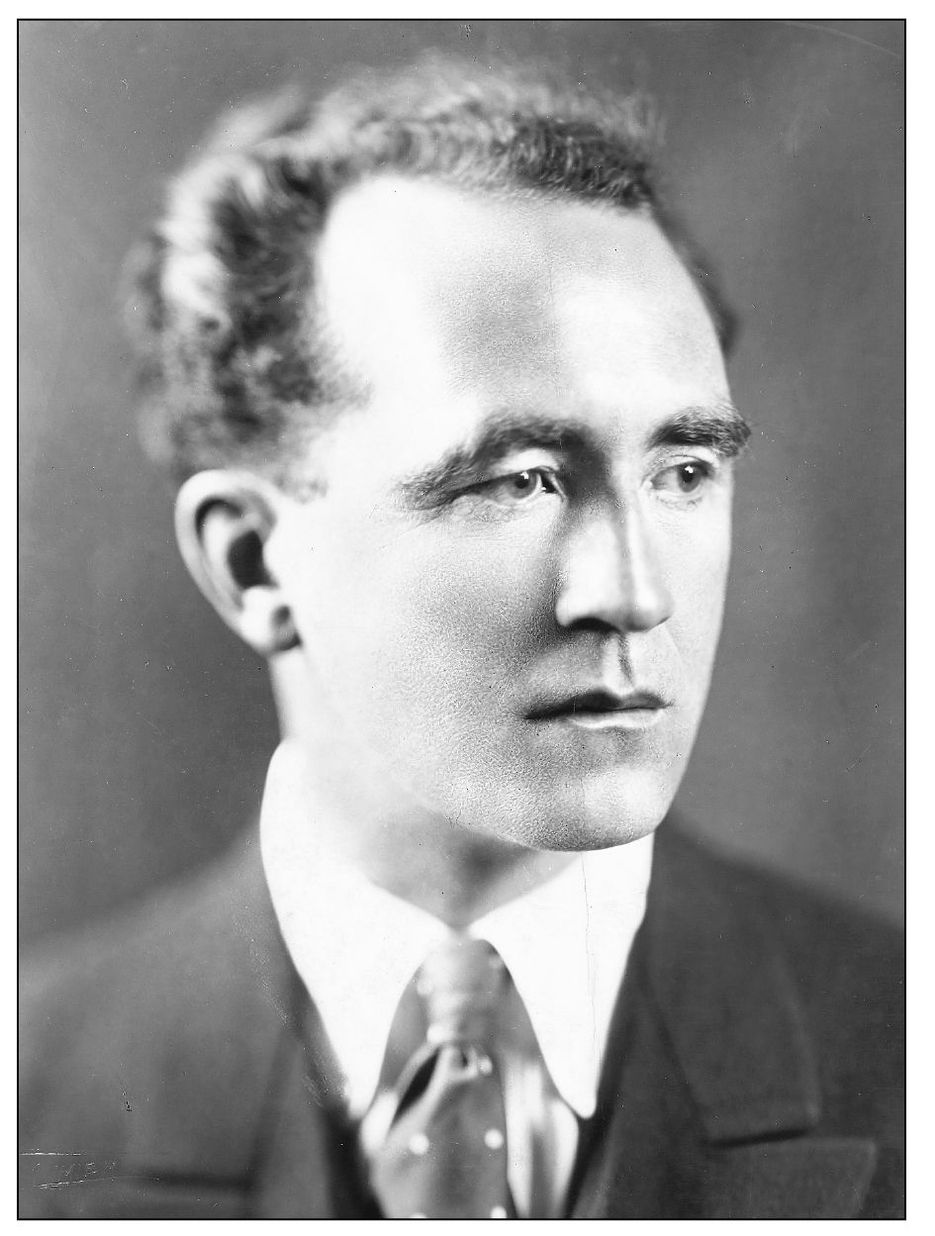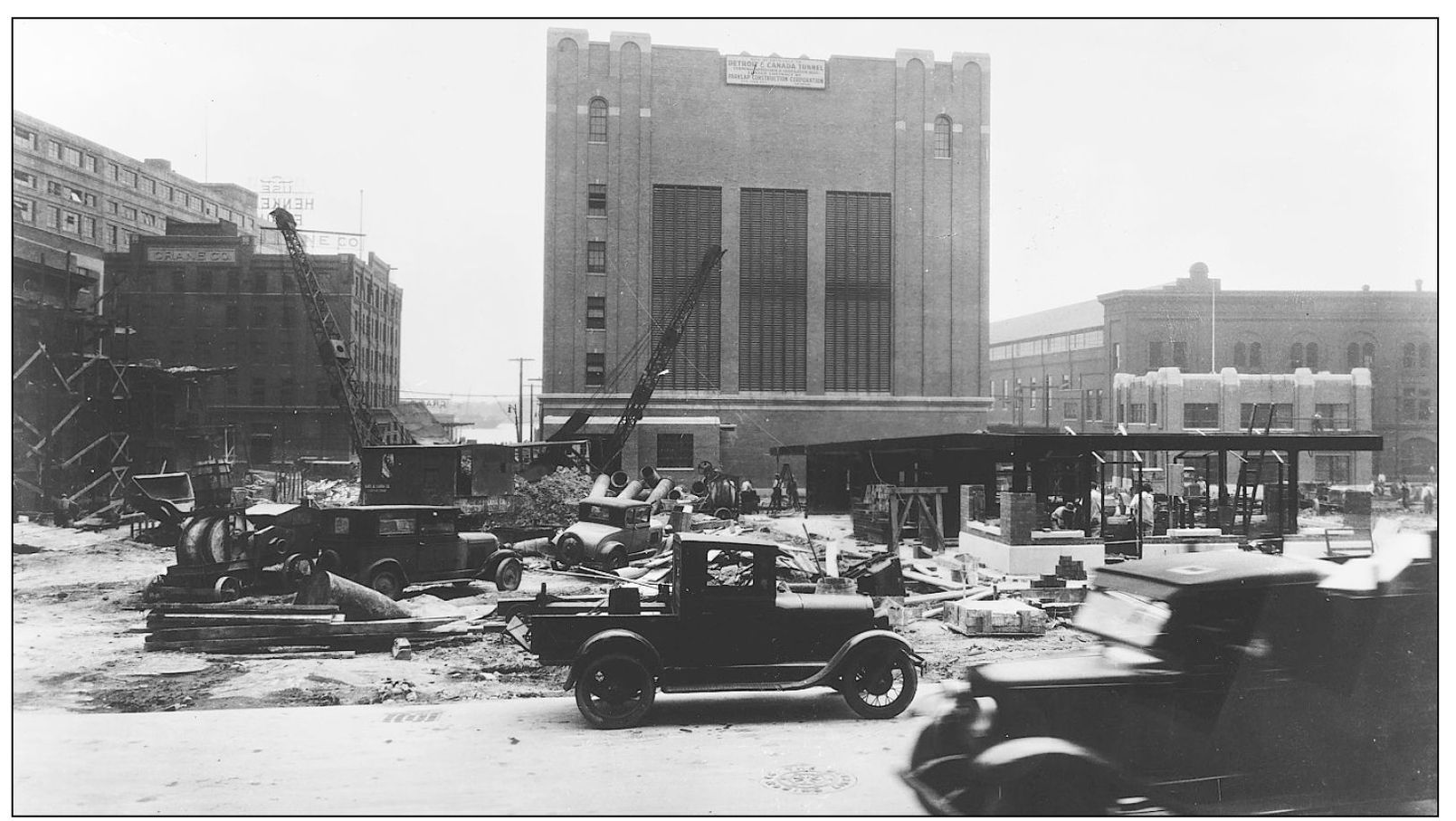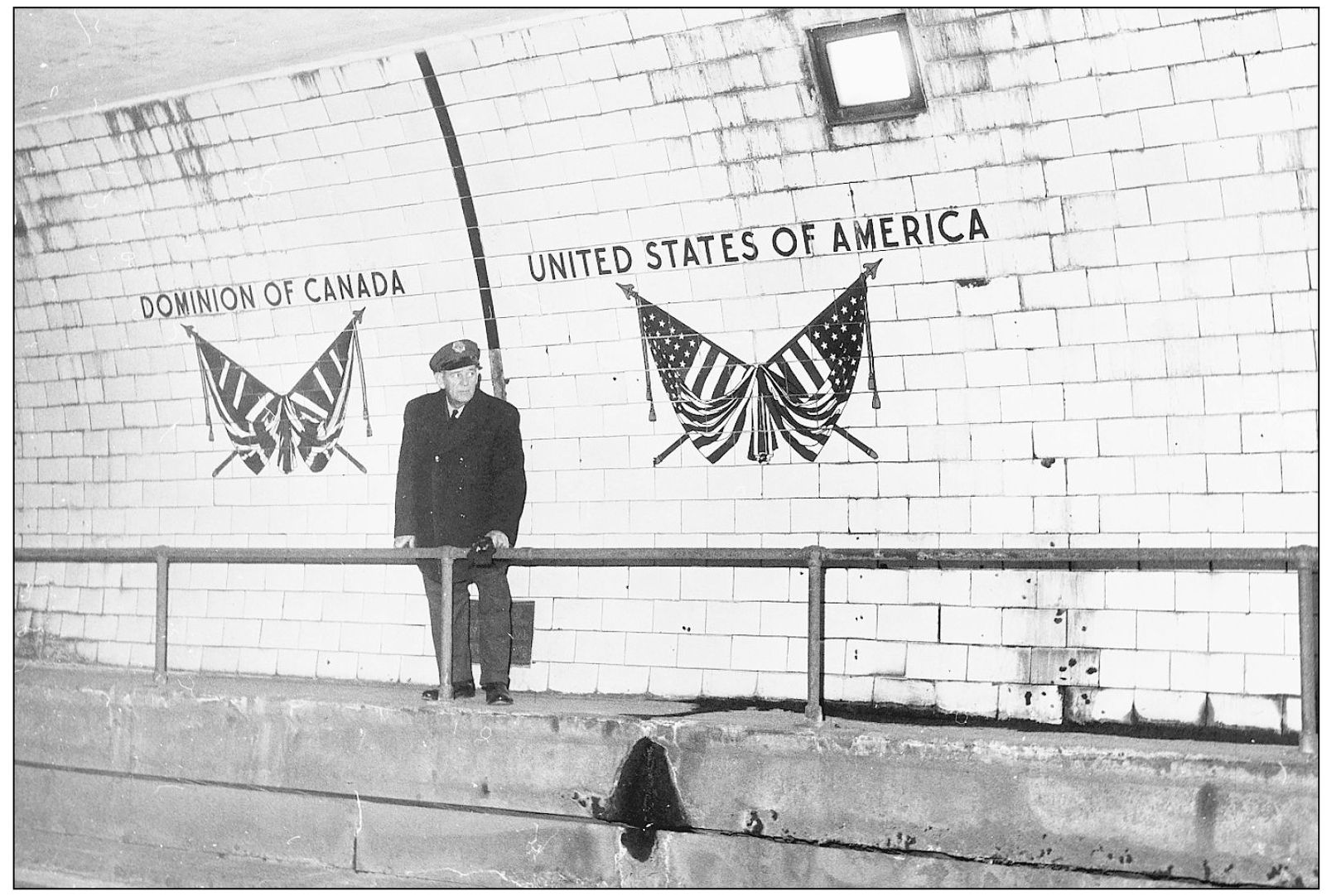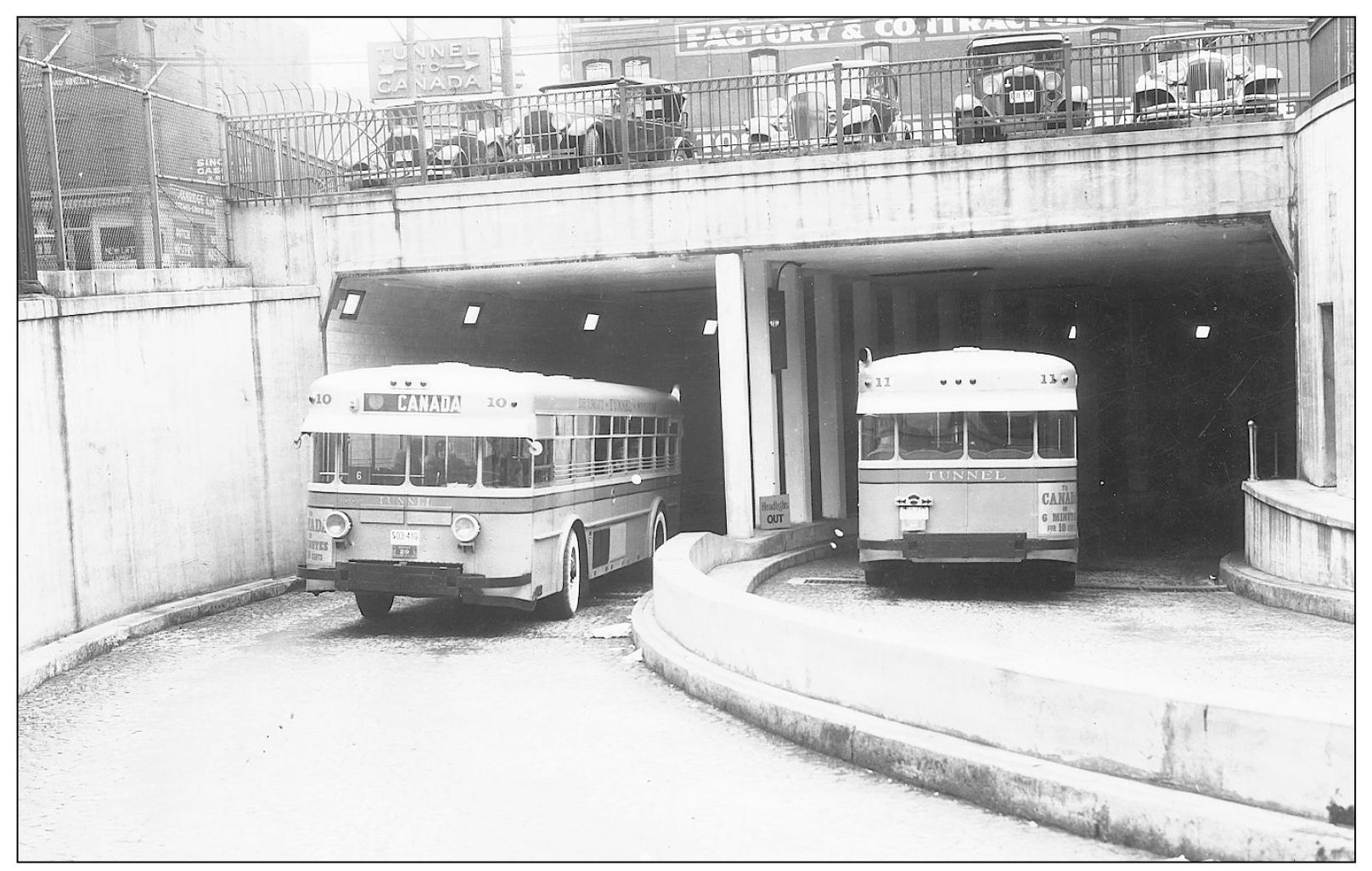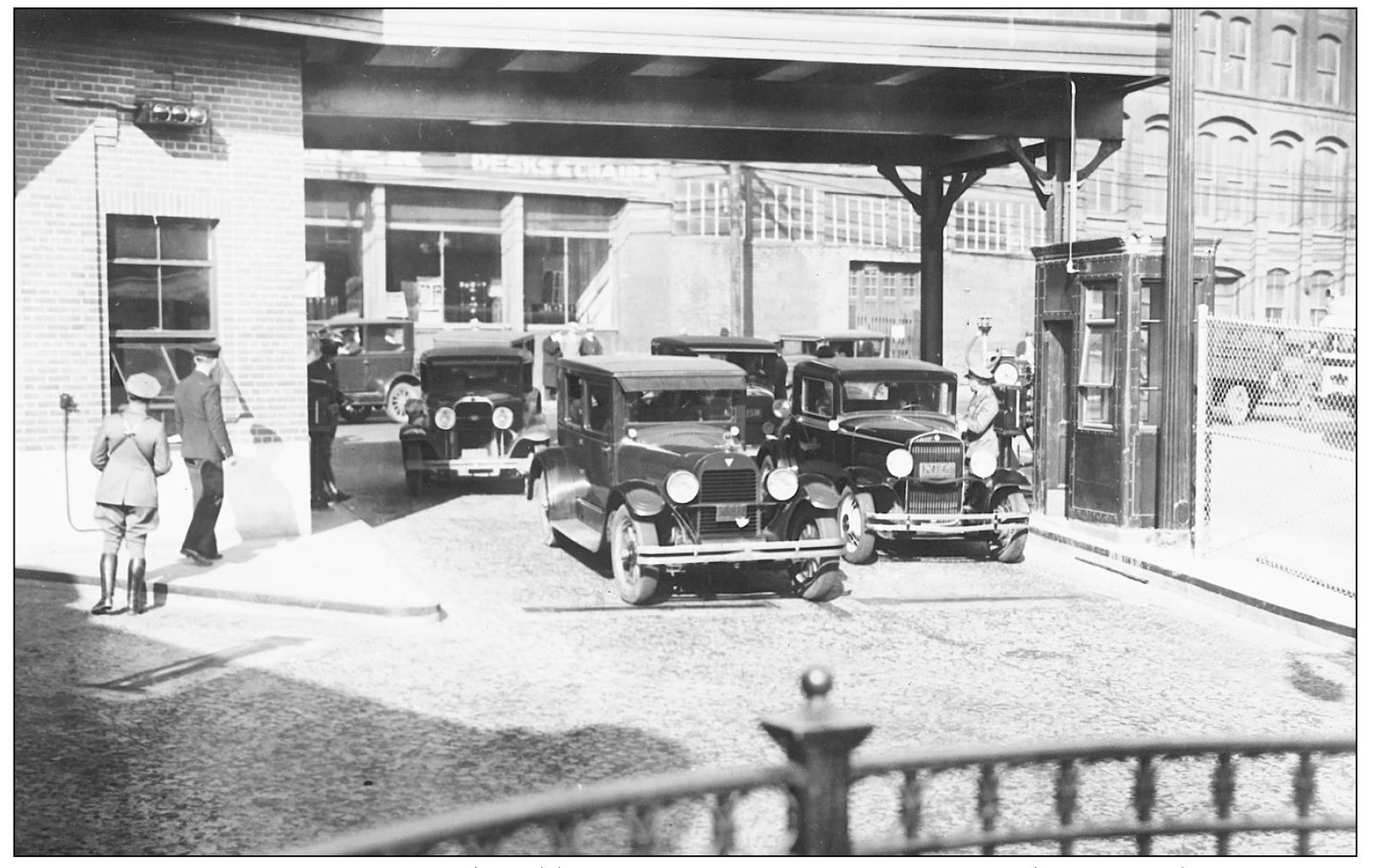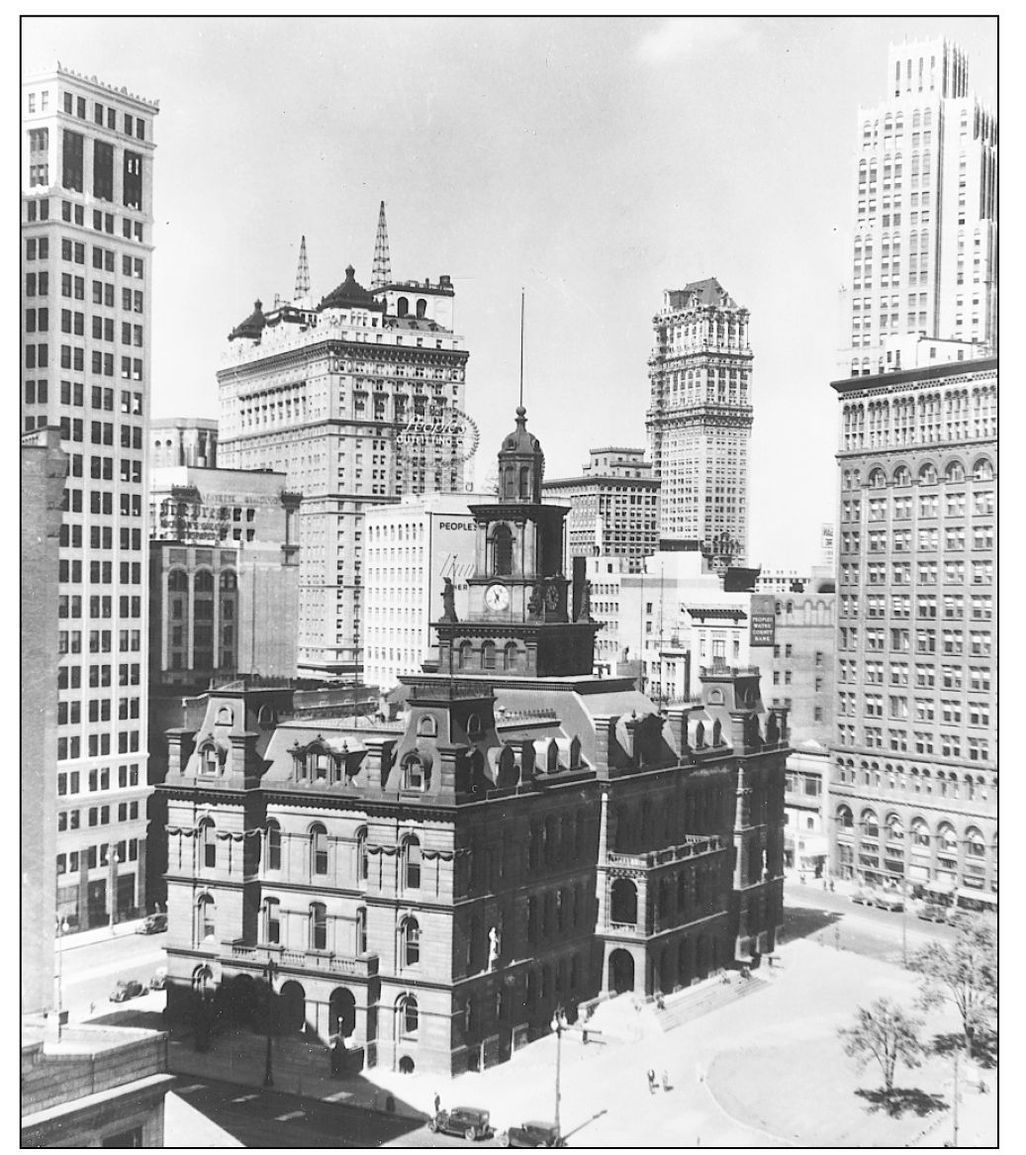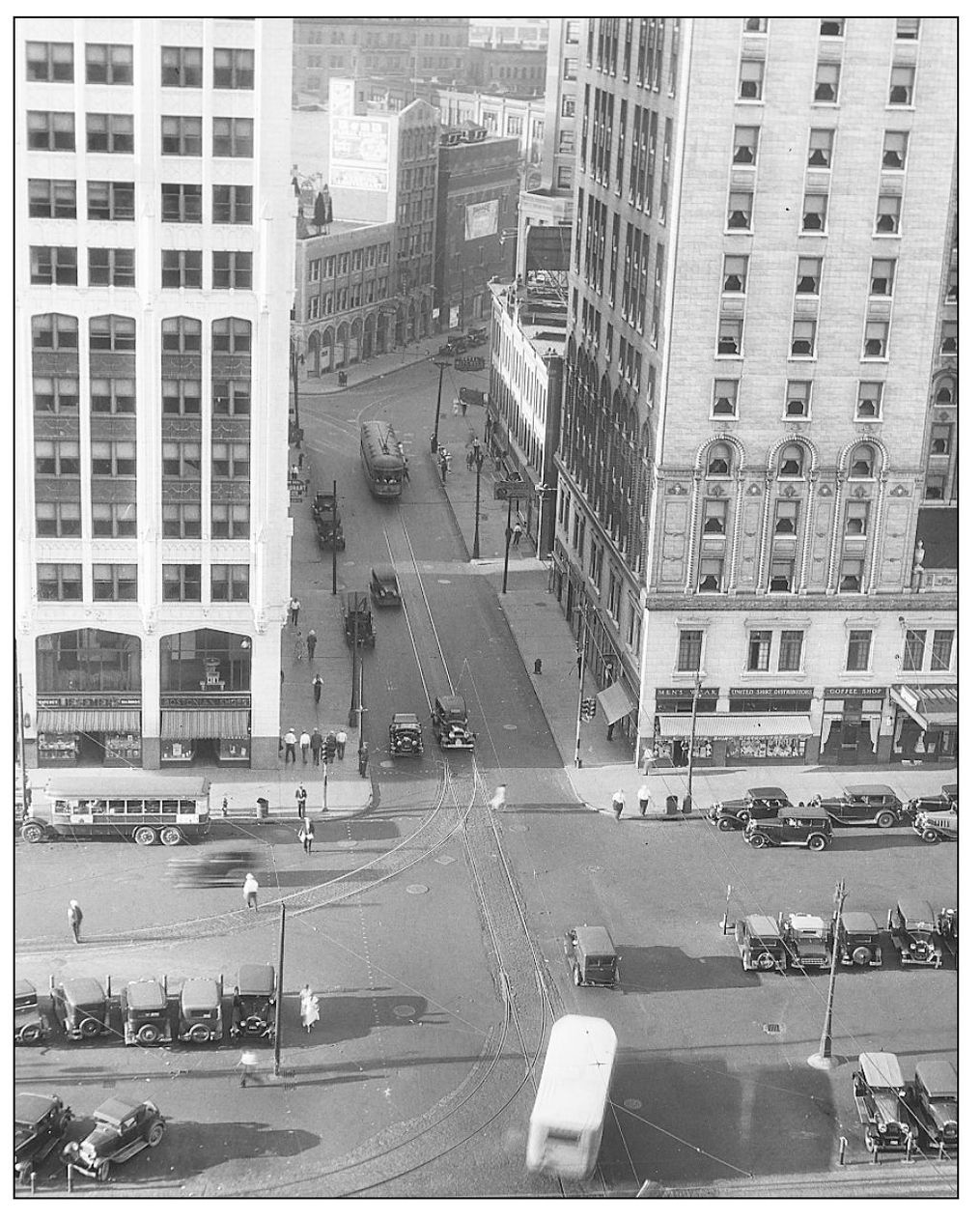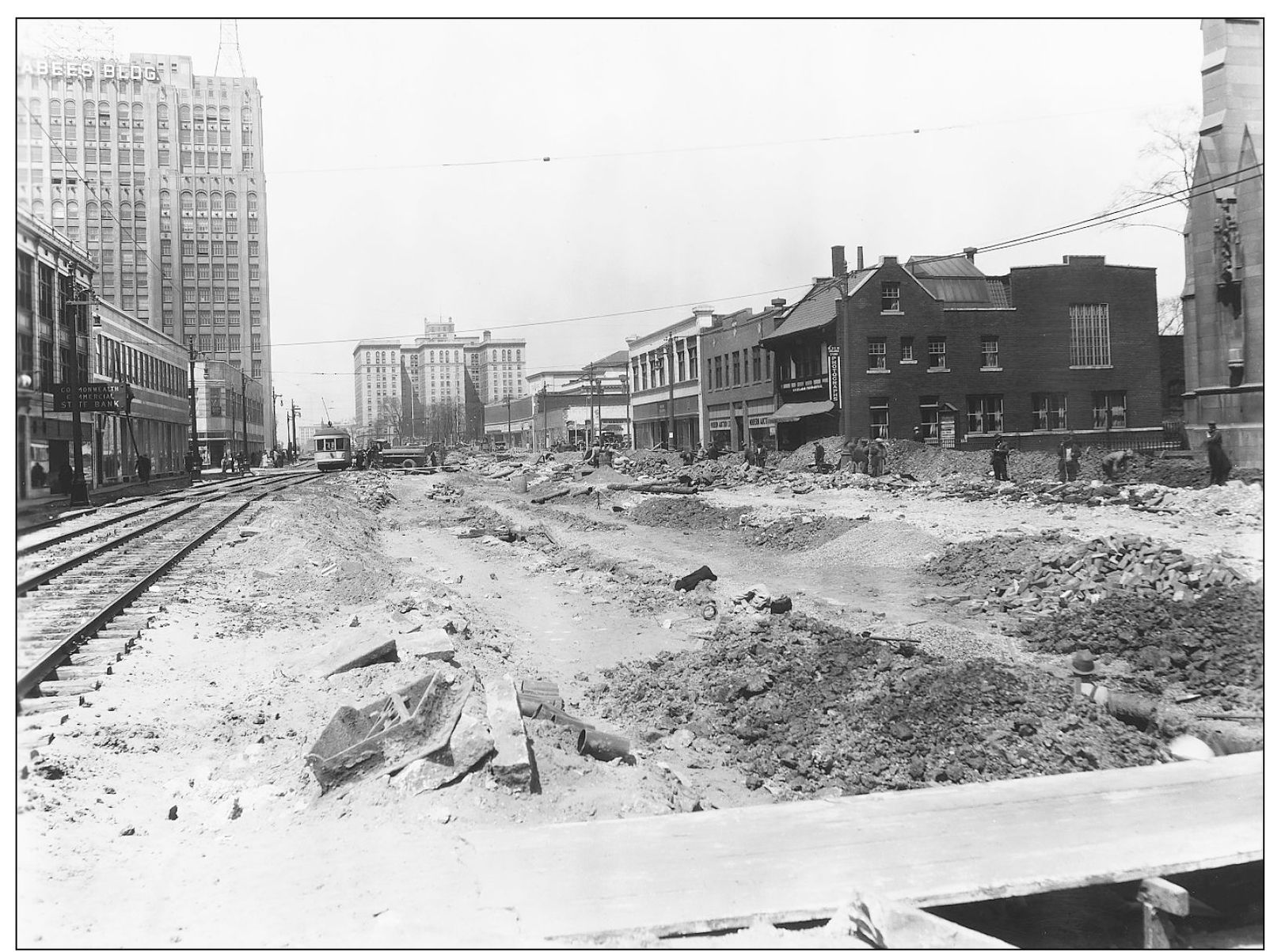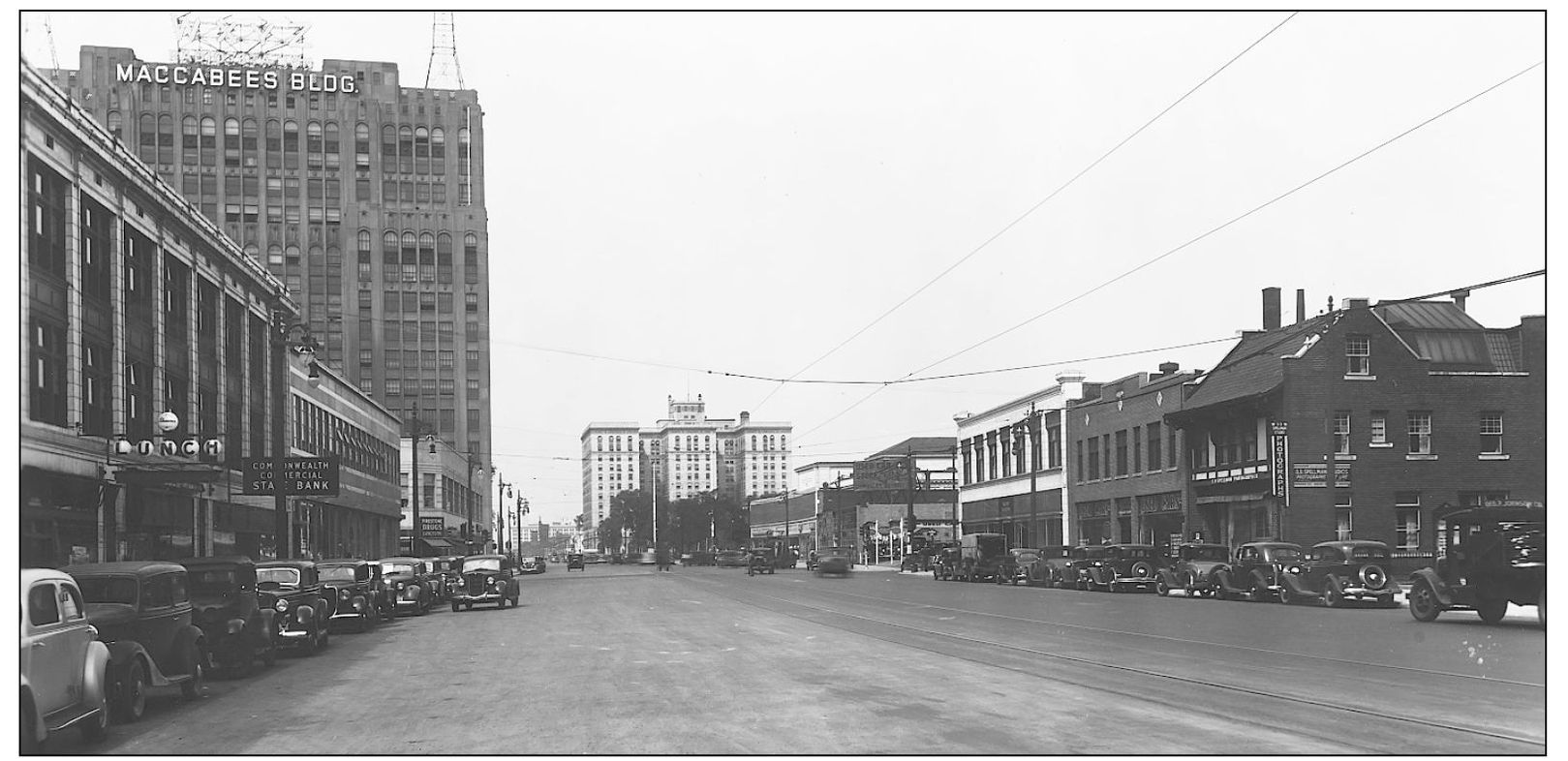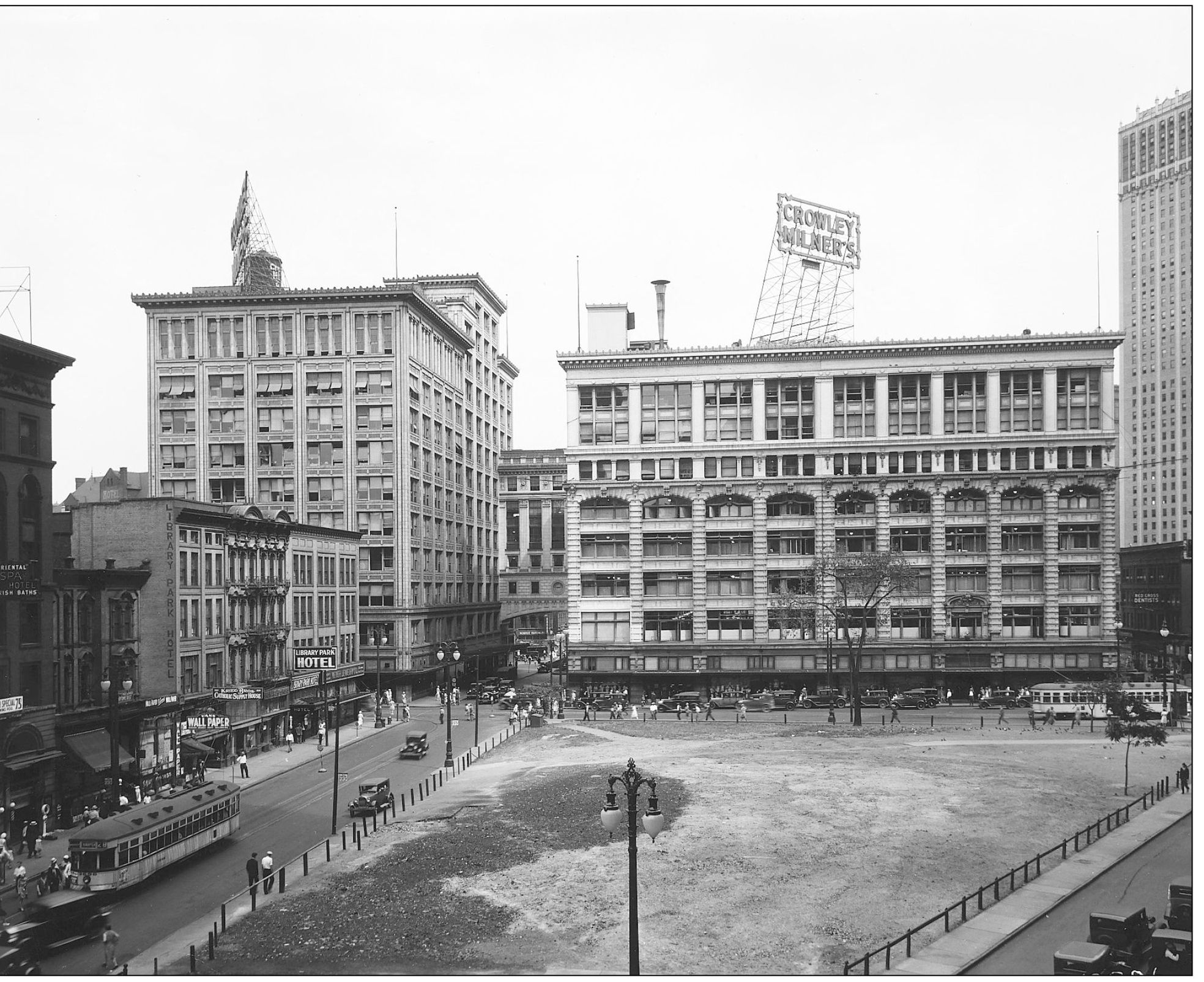One
THE 1930S
FRANK MURPHY, MAYOR OF DETROIT, 19301933. Born in Harbor Beach, Michigan, in 1890, Frank Murphy graduated from the University of Michigan with a law degree in 1914 and joined a law firm in Detroit. When the United States entered World War I, Murphy joined the Army and served as an infantry captain in France. After the war he entered private practice and taught law at the University of Detroit. From 1924 to 1930 Murphy served as judge on Recorders Court before resigning to run for mayor. As mayor, Frank Murphy earned a good reputation by helping people in Detroit who had lost their jobs during the Depression, and he was a strong proponent for state and federal welfare. Murphy resigned his office in 1933 when Pres. Franklin Roosevelt appointed him governor-general of the Philippines. Murphy was later elected governor of Michigan and served from 1937 to 1939.
THE SKYLINE OF DETROIT, 1930S. A view of the heart of downtown Detroit from the Canadian side of the river shows off the cluster of high-rise buildings that make up the business district. The tallest building in the center group is the Penobscot Building, accompanied by the Guardian, Union Trust, and Barlum Tower. Just to the right of center is the Hudsons Building. In the grip of the Great Depression, Detroit was crippled with corruption, saddled with debt, and riddled with unrelieved unemployment. Still, it is business as usual albeit on a smaller scale. Excursion steamers and cargo vessels still ply their trades on the river.
WOODWARD AVENUE AND RANDOLPH STREET, 1930. Construction of the Detroit to Windsor, Canada Auto Tunnel is underway. The tubes are in place under the river and the ventilation building (center) is finished. The toll booths and the rest of the entrance is being worked on to be completed in time for a November opening.
THE INTERNATIONAL BORDER, 1930. An employee of the Tunnel Company stands at the U.S. Canada border beneath the Detroit River at the halfway point. The tunnel officially opened on November 1, 1930, and became a commercial success overnight. The first driver through was Joseph Zuccatto, a cement truck driver, working on the tunnel. He drove his truck through and back again to make sure everything was okay.
THE DETROIT-WINDSOR AUTO TUNNEL, 1930. Two tunnel buses make their way through the 5,160-foot-long tunnel beneath the Detroit River. There were 30 new buses operating through the tunnel from the heart of downtown Detroit to the heart of Windsor, Ontario. The construction of the tunnel took two and a half years.
WOODBRIDGE STREET, 1930. The ribbon-cutting ceremony is over, and Pres. Herbert Hoover, in his office in Washington, D.C., has pushed a button to ring bells in Windsor and Detroit. Here, the first toll of 25 is collected, and the tunnel is open for business. Construction costs reached a staggering $25 million.
WOODWARD AVENUE, LOOKING SOUTH TOWARD THE RIVER, 1930S. A typical day in downtown Detroit sees office workers and shoppers on the sidewalks and motor traffic filling the streets. One lane in each direction took care of automobile traffic, while in the middle of Woodward Avenue, the same held true for the streetcar lines. In the foreground are two doubledecker sightseeing buses that are modeled after their English counterparts. This is the center of the Motor Citys retail district, headed by the J.L. Hudson Company. In competition with them are Kerns, Woolworths, Kresges, Klines, and an assortment of shoe stores, jewelers, milliners, and haberdashers.
MICHIGAN AND WOODWARD AVENUES, 1931. City hall still stands grandly amidst its new high-rise neighbors. To the right can be seen the Majestic Building, while in the background rise the Book-Cadillac Hotel, the Book Building, and the David Stott Building. The circular sign directly behind the clock tower announces Peoples Outfitting Company.
CADILLAC SQUARE AND BATES, 1932. A birds-eye view looking along Bates Street reveals a few Detroiters in shirtsleeves and streetcars competing with buses for fares. Occupying the ground floor of the Barlum Tower building on the left is Liesemers Jewelers and Bostonian Shoes, while on the right is United Shirt Distributors and a coffee shop. One could park in the middle of the street.
WOODWARD AVENUE AND HANCOCK, LOOKING NORTH, 1930S. A major street renewal is underway as Woodward Avenue is widened in the Hancock area to make room for more traffic. It seems that the only way to get along on this stretch of road was by streetcar while the construction was in progress.
WOODWARD AND HANCOCK, LOOKING NORTH, 1930S. The same scene as above is pictured here after the construction is complete. The Maccabees Building dominates the scene with the visible radio tower of WXYZ, which broadcast the Lone Ranger and Green Hornet programs to children everywhere. In the middle distance is the Park Sheraton Hotel, while just to its right the Detroit Institute of Arts can be seen.

